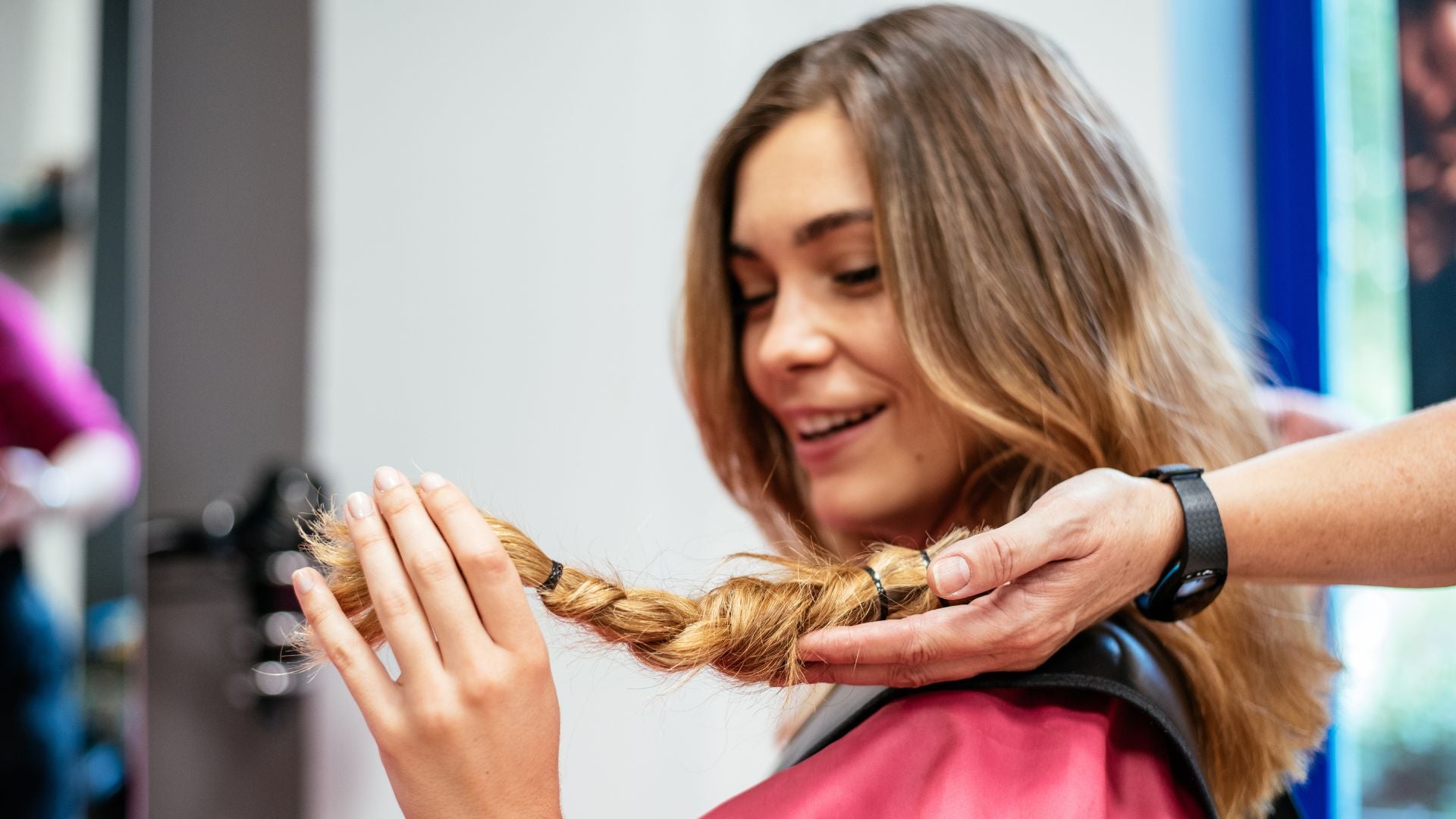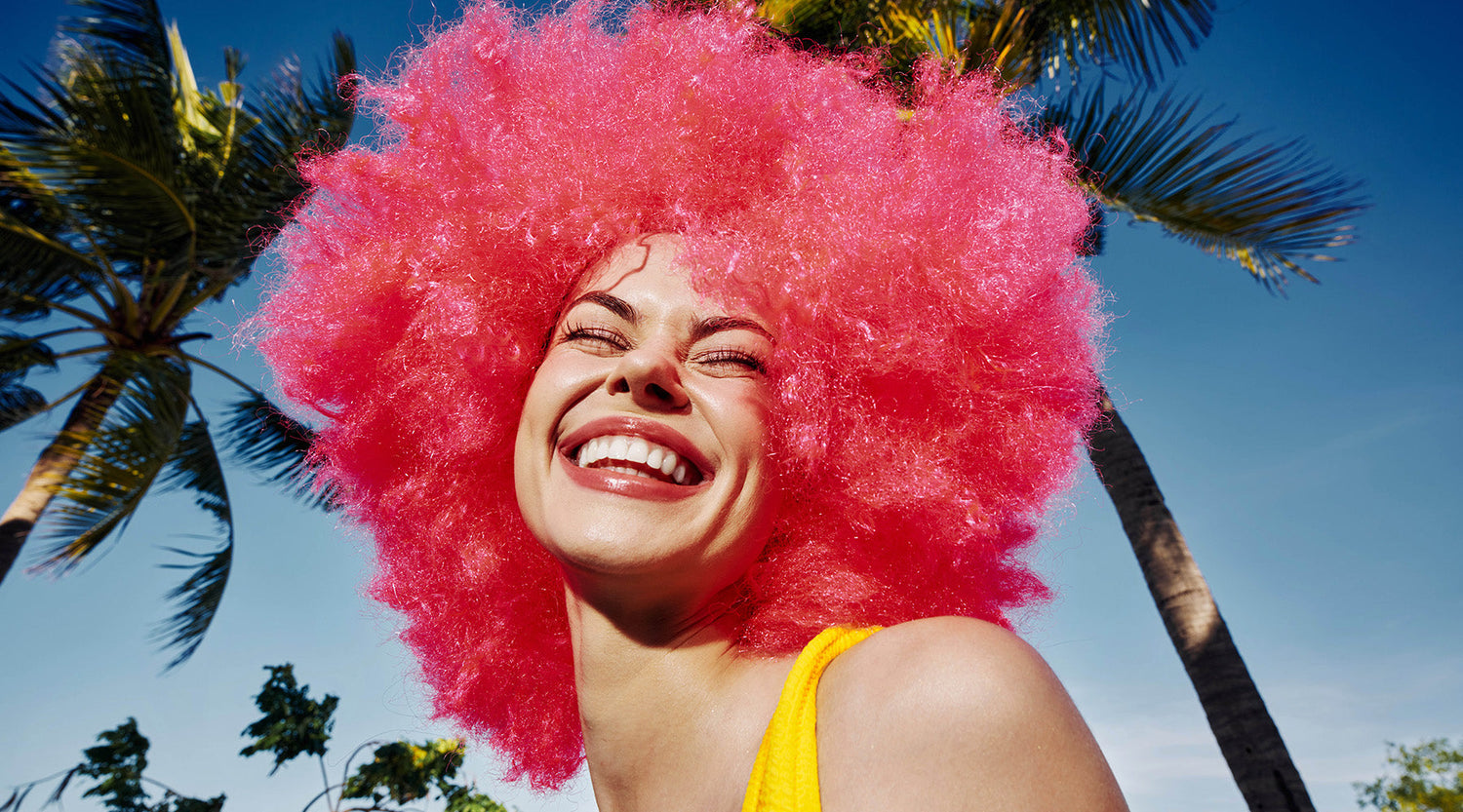Our hair is precious to us, and we spend time, effort, and money to make it look amazing. But it can also be a precious gift to those who need it. This holiday season, if you're thinking of giving the gift of a hair donation, we're not just going to stand up and applaud you, we'll help you navigate the process and find the best places to send your hair.
Why Should You Donate Hair?

We get it; lopping off your lovely locks and cute curls can feel like a costly sacrifice. But it can be life-changing for someone else. People who suffer medical hair loss, are undergoing cancer treatment that is causing hair loss, or are victims of a variety of other ailments, receive human hair wigs from nonprofits that accept hair donations. Human hair wigs are far more expensive than synthetic wigs because they require more work to produce. But they are also a much better product that looks and feels like real hair, and is more durable if cared for properly. Hair donations help offset the cost of wigs, and can truly help patients -- both adults and children -- improve their confidence and morale while on the road to recovery.
The Hair Donation Process

Donating your hair isn't as simple as chopping off your ponytail and mailing it in. There are donation requirements, minimum length needs, a hair donation form to fill out, and lots more that you need to know before you get the scissors out.
Hair Length
One of the most frequently asked questions about hair donation is how long does your hair need to be. Unfortunately, if you have short hair, you cannot donate hair. When human hair wigs are made, as much as four inches or more can be lost in the process. If you can, we recommend growing your hair out as much as possible before you get it cut. Hair donation organizations vary in their requirements, but typically the minimum requirement is 8 inches to 12 inches in length. If you can, grow it to 14 inches or more before you donate.
Hair Quality
Do you regularly bleach your hair? Or do you have gray hair? Color-treated hair and gray hair might not be accepted at every charity. You'll have better chances of being able to donate your hair if it's in its natural shade, but again, the rules vary by organization.
Cutting Your Hair
The easiest way to donate your hair is to make an appointment at a salon that partners with the hair donation organization of your choice. Many hair salons offer free haircuts if you're making a donation, so it could be the best time to try a professionally styled shorter 'do! If you prefer to chop your own locks, check the charity's guidelines on how to cut your hair. In general, the process is as follows:
- Measure your hair. Don't measure to the very tip of your longest strands. Instead, measure from the point where you'll start to cut to the point where your ends begin to thin out. If you've got curly hair, you can pull it tight before measuring.
- Wash and dry your hair. Who wants to receive (much less wear) oily, greasy hair? Use your favorite Lu shampoo and conditioner to clean your hair the right way. After, air dry rather than towel dry. If you have wavy or curly hair, leave those curls in rather than straightening. Make sure your hair is completely dry, because you're going to be wrapping it in plastic before sending it, and damp hair or wet hair can get mold, which would lead to your gift being rejected.
- Tie hair in multiple ponytails. You might think that one fateful slice of a thick ponytail is all you need to do, but it's a better practice to divide your hair into at least four sections and four ponytails.
- Cut hair. Keep in mind that you'll need to cut above the rubber band to keep it bound together, so account for an additional inch or so when you tie your ponytail.
- (Gift) wrap and mail it out. Gather each ponytail section and place them in a sealed ZipLoc bag. Complete any hair donation form required by your charity of choice, and mail your gift according to their instructions.
Where Can You Donate Hair?
There are many organizations that welcome hair donations. We've singled out these nonprofits for their years in the business and outstanding reputation.
1. Locks of Love
With their enduring mission to "return a sense of self, confidence and normalcy to children suffering from hair loss," Locks of Love has been changing lives since 1997. They make hundreds of wigs every year and receive thousands of locks every week.
2. Wigs for Kids
Proudly serving children and teens since 1981, Wigs for Kids is one of the longest-running hair donation organizations in the country. They make custom-made hair replacements valued at $1,800. “Each prosthesis is hand-tied and is made completely from human hair. We make sure they look just like a child’s own hair,” says founder Jeffrey Paul.
3. Hair We Share
Based in Long Island, Hair We Share is a second-generation, family-owned wig design business that has received more than 500,000 hair donations since their founding in 2014. They partner with "donation salons" across the country and donate hair to cancer patients and people suffering from other medically-related hair loss conditions.
4. Children With Hair Loss
Children With Hair Loss was founded by Regina Villemure, a former cosmetology instructor, hair stylist and hair replacement specialist, after her niece, Sarah, was diagnosed with Acute Lymphoblastic Leukemia at age three. Since they opened in 2000, they have never charged a penny for their real hair wigs to children and young adults facing medically-related hair loss.
Note that Pantene Beautiful Lengths, a popular destination for hair donations, no longer accepts them.
For many women, there might not be a more generous donation we can make than our beautiful locks. But there might also not be a more worthy gift to make to someone who desperately needs it.





